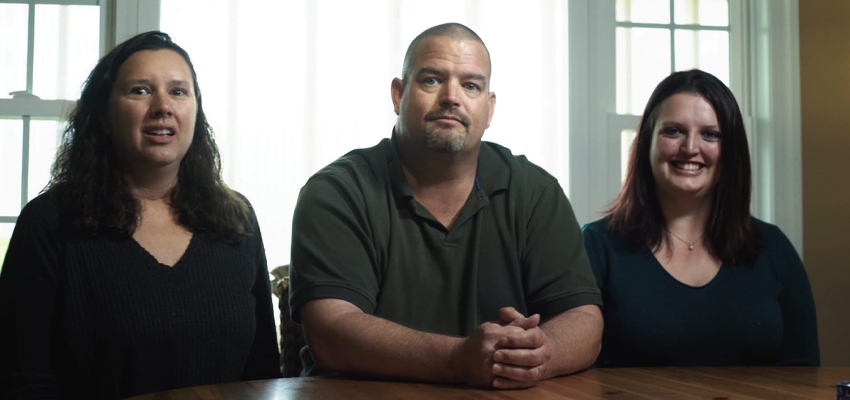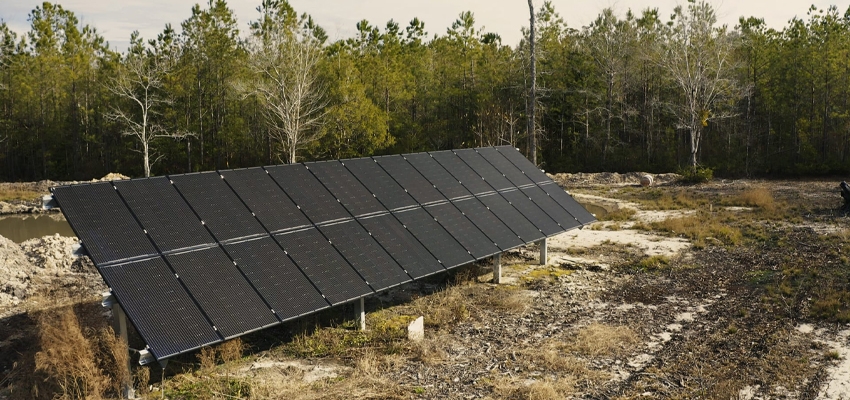One of the questions PowerHome often gets from customers is how our solar panels fare against Mother Nature’s extremes. How do our solar panels handle hot and cold weather? How do they handle hail? Or even, how do they handle hurricanes?
For that final scenario, our customer Matt Ruff knows firsthand that our panels hold up just fine, thank you.
Solar Panels Withstand Hurricane Florence
In September 2018, Ruff, his wife Jennifer and daughter Maddi rode out Hurricane Florence in their Supply, N.C., home, which is located about 30 miles southwest of Wilmington, N.C., one of the areas hit hardest by the storm and its flooding, and about a dozen miles inland from the Atlantic Ocean. The storm brought the area winds of 100 miles per hour and rainfall totaling 30 inches, flooding much of the Ruffs’ backyard.
Still, as a veteran of riding out hurricanes dating back to Hurricane Diana in 1984, Matt wasn’t terribly worried about his own safety or that of his family because he knew his home was built like “a tank” and that his home sits on some of the highest ground in Brunswick County. But he was plenty worried about whether the 26 solar panels he had installed on a ground-mounted array would hold up, especially when earlier forecasts called for Florence to be a Category 4 storm.

As an electrician who has installed plenty of utility scale solar, he has seen what high winds, particularly tornadoes, can do to panels. Yet as he documented to friends and relatives on Facebook Live how he was holding up throughout the storm, he continually saw that his panels were always in their rightful place. You’ll see those panels in the photos above.
“These panels, they didn’t wiggle, they didn’t move through the storm. I can’t commend the installation enough. The guys that did it, did a great job.” Ruff said.
Because Ruff interconnects the solar systems to power grid, and he does not have a battery backup, he and his family were without power for as long as his non-solar neighbors were – for 3½ days. In this setup, the solar system shuts down for safety reasons, as it cannot be sending power back to the grid while utility workers are repairing the lines. Once the backside of the storm’s eye wall passed over and the wind changed direction, it was lights out for about 84 hours.
“It blew one way for so long, when it comes back and blows the other way, it doesn’t take long for the weak stuff to snap, fall, or give way,” Ruff said.
Rain Plummets Wilmington North Carolina in 2018
Along with the 30 inches of rain that came from the hurricane, 2018 brought 70 more inches of rain to the Wilmington area. A typical year of rainfall for the area is about 55 inches, so the Ruffs dealt with nearly double the rain than they’re used to experiencing in any one year.
What’s incredible is how his solar panels performed. Despite all the rain, his panels performed at 90 percent of what we projected for that 12-month span. Knowing that, Ruff was more than pleased with his level of production, and is fully aware of the value his solar panels bring.
“It’s fun watching your meter run backwards!” Ruff says.
In the months since the hurricane, Ruff dug out a pond in his backyard with some heavy equipment, allowing the water level to recede to where he’d like it to be. As an avid outdoorsman and beekeeper, he is immensely prideful and knowledgeable about all that Mother Nature provides. It’s indeed an education just to hear him share his life experiences with you. Maybe that’s why he understands the value of solar so well.
“Our co-op cannot raise the rate anymore on almost half the juice our home uses, since we make it ourselves. That alone makes it worth it. We’ve had our system over a year now, and we have zero regrets.”
The Aftermath of Hurricane Florence
Following the hurricane, Ruff and his family were living on an island for a few days before the water level receded, but he noticed how quickly teams mobilized to repair all the damage. He saw how the state’s Department of Transportation worked to repair roads that had been washed out by flash flooding. And a little bit nearer to his own heart given his occupation, he watched as hundreds of power line trucks went into action.
“We saw the line trucks coming and going every day on our quiet country road where we hardly ever get traffic because of this large staging area (near my home),” Ruff said. “Every morning and every night, it was 400 line trucks going by the house, and it was a beautiful thing to see, that was really cool — those guys coming in big numbers and getting it done for us. They came in from all over, and they got Brunswick County sorted out pretty quick.”
While the landscape on the North Carolina coast has changed because of this storm, what hasn’t changed are the panels in Ruff’s backyard — they are once again giving him the level of energy independence that can be enjoyed by PowerHome customers.
Solar Resiliency
One hundred inches of rain could not deter Ruff from having 100 percent satisfaction. We’re glad that he and his family are safe It is impossible for PowerHome to say that the panels it installs are hurricane-proof. But it is great to hear that at least in Ruff’s case, the panels proved their resilience.
(1).png)

(1).png)